The key moments in Brexit negotiations so far as Britons ask, 'What happens now?'
After Britain and the European Union struck a deal early on Friday, attention was already turning to what happens next for Brexit.
Friday’s breakthrough guarantees no ‘hard border’ for Northern Ireland with the Republic, rights for UK citizens living in the EU and vice versa, as well as a financial settlement which is ‘fair to the British taxpayer’.
But the road to Britain finally leaving the EU could still prove bumpy – with several contentious areas left to negotiate, not least that Britain will have to pay a ‘divorce bill’ of almost £40 billion – and still many people to convince.
Another potential pitfall is the continued role of European judges in UK life after the divorce is finalised.
The EU has warned that this is just ‘the end of the beginning’ and there are many issues ahead.
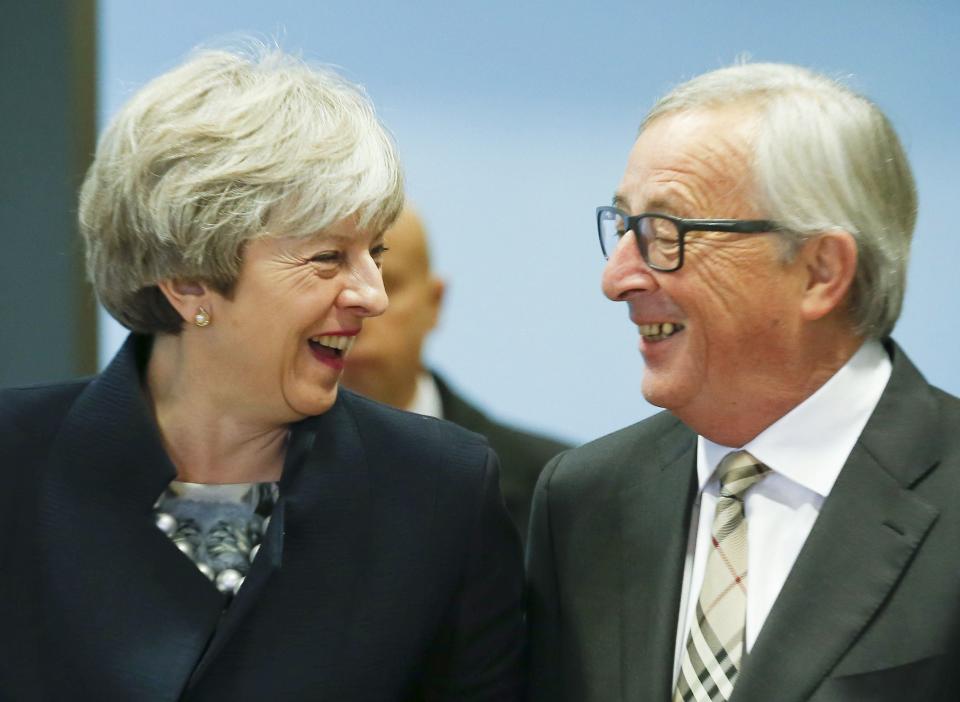
What Happens Next?
First of all, Theresa May has to convince her Cabinet, Parliament and the British public that she has got a good deal this morning.
This could prove tricky, given the splits within her own party and Cabinet on the issue. It is unclear how the public will also react to the final amount the UK has to pay to leave the EU.
Attention then turns to the December 14 meeting of EU leaders at the European Council summit.
Here, the EU is likely to approve ‘sufficient progress’ has been made for talks to move on to phase two of Brexit negotiations, on trade.
Britain has already argued that Brussels should then swiftly issue guidelines on future relations.
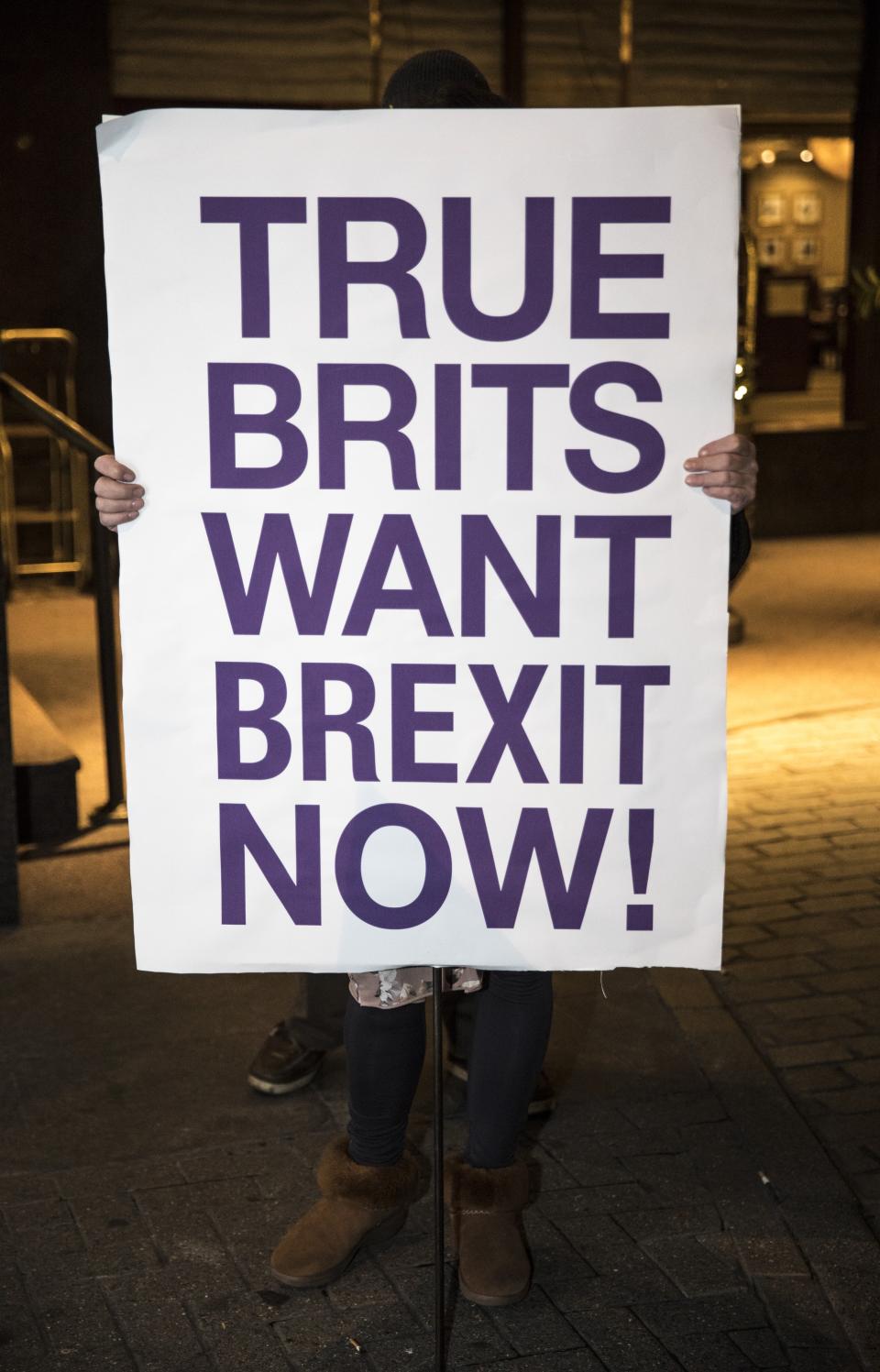
This could prove controversial as there are concerns in London that the EU could drag its feet on this issue as it has to agree the position for 27 countries. And some within those nations have already pointed to the fact that the UK took its time getting to agree the deal reached this morning.
Britain is fearful that any delay might make the business sector more jumpy and the government is keen for the major companies not to activate contingency plans which could see jobs being moved out of the UK.
The next phase of talks will also focus on transitions talks, a process which will see Britain eventually lose its voting rights as a member of the EU, which could prove politically contentious in the UK. during ongoing talks.
Detail of the trade talks will be key also, as they will finally determine whether Britain goes for a ‘soft’ or ‘hard’ Brexit, and if the country remains within the Customs Union and the Single Market, a major point still to be finalised.
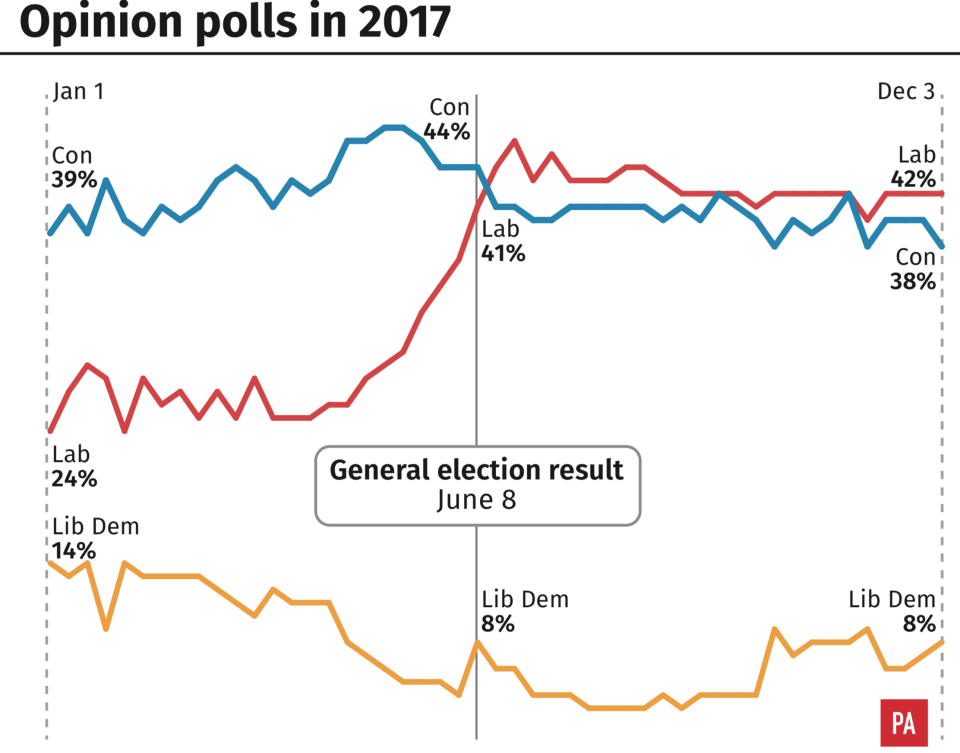
BREXIT BREAKTHROUGH – MORE FROM YAHOO UK
Brexit deal: What it means for UK travellers, from Ehic cards to passports for Ireland
Brexit deal: the inside story of the 12 hours when Theresa May secured a UK deal to leave EU
Why not much remains of Theresa May’s red lines after the Brexit deal
Brexit deal agreement in full: Read the report published after phase one of talks
Britain has said it can deliver a unique deal with the EU trading bloc, but hardline Brexiteers want the UK to leave the customs union and single market as well.
It is also unclear what final position the EU will adopt on trade.
The summit later this month may also determine the period for Britain’s transition once it finally leaves the EU in 2019. Any delays in determining this time could also impact on trade.
It is also unclear what final position the EU will adopt on trade.
The summit later this month may also determine the period for Britain’s transition once it finally leaves the EU in 2019. Any delays in determining this time could also impact on trade.
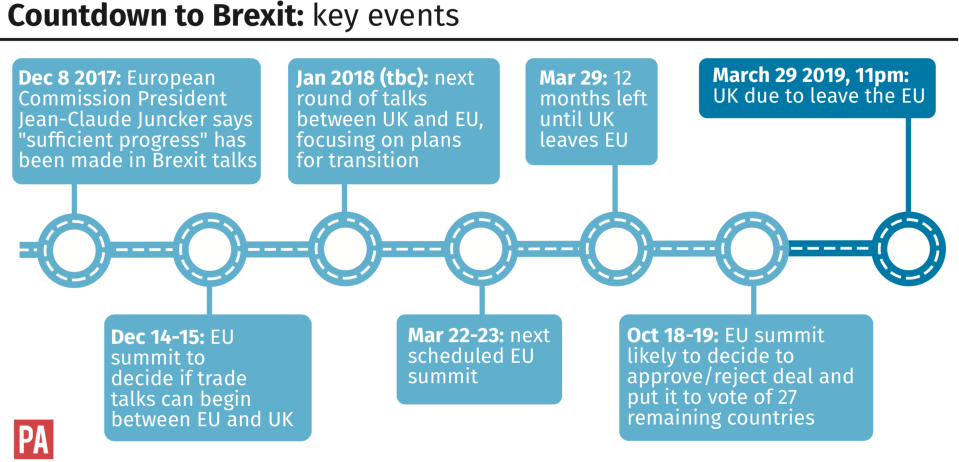
The key moments so far in Brexit negotiations
June 23, 2016: Britain votes to the leave the European Union in a historic referendum. Final results show almost 52% voted to leave, 48% backed remaining.
June 24, 2016: Prime Minister David Cameron resigns, Theresa May takes over
March 29, 2017: Britain triggers Article 50 of the Treaty on European Union, giving notice of its intention to leave the EU. A two-year period for negotiations begins.
June 9, 2017: Britain holds a snap General Election and the Conservatives fail to secure an overall majority and propped up in power by the Democratic Unionist Party.
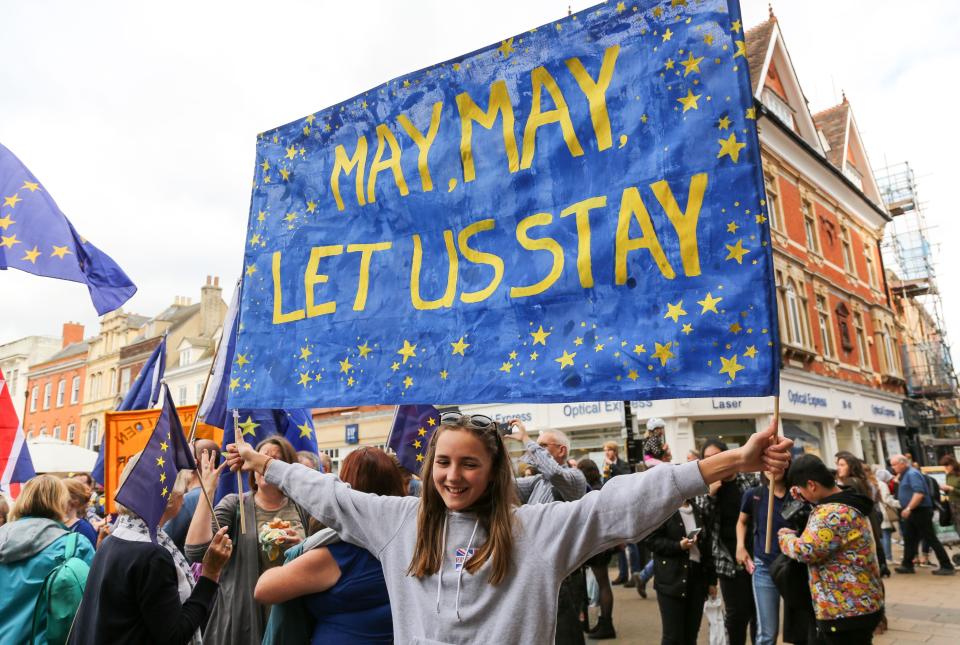
June 19, 2017: Brexit negotiations begin.
December 13: European Parliament votes on the report drawn up by negotiators for the UK and EU on the divorce issues of citizens’ rights, the Irish border and the financial settlement.
December 14/15: Leaders of the remaining 27 EU states, meet and are expected to give the green light to move negotiations on to trade and the transition to a post-Brexit relationship.
December 20: UK government’s EU (Withdrawal) Bill is due to complete crucial committee stage in the House of Commons.
January 2018: Next round of talks due to begin between EU and the UK.
March 22/23, 2018: Next scheduled EU summit
October 2018: Deadline for a deal to be finalised.

March 29, 2019: Two year deadline for Article 50 passes and the end of the month is the date Britain should leave the EU – with or without a deal.
December 31: Britain ceases payments to the EU budget.
2021: If a two-year ‘implementation period’ is agreed, Britain will finally move to its new relationship with the EU in the spring of 2021, ceasing to observe EU rules and regulations.
2027: Expected end for the European Court of Justice’s role in the oversight of the rights of EU citizens living in the UK.

 Yahoo News
Yahoo News 

